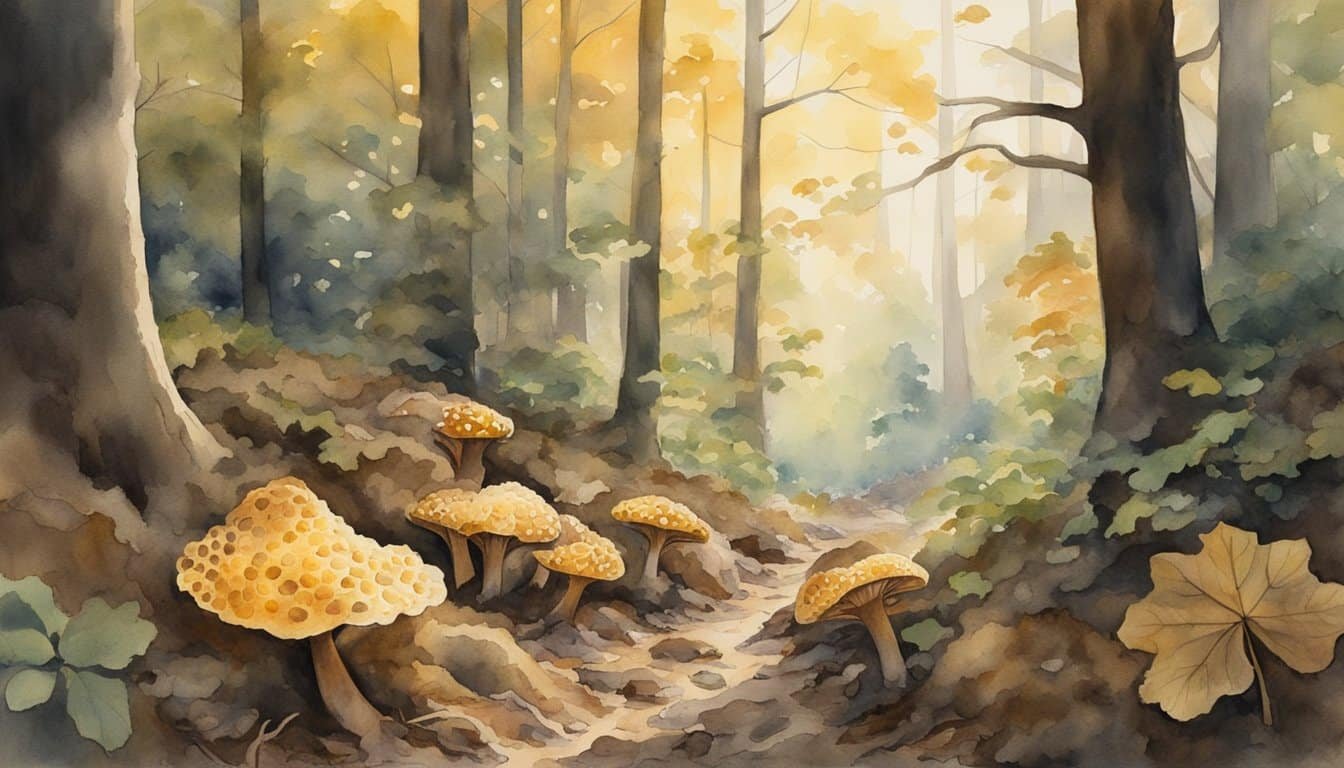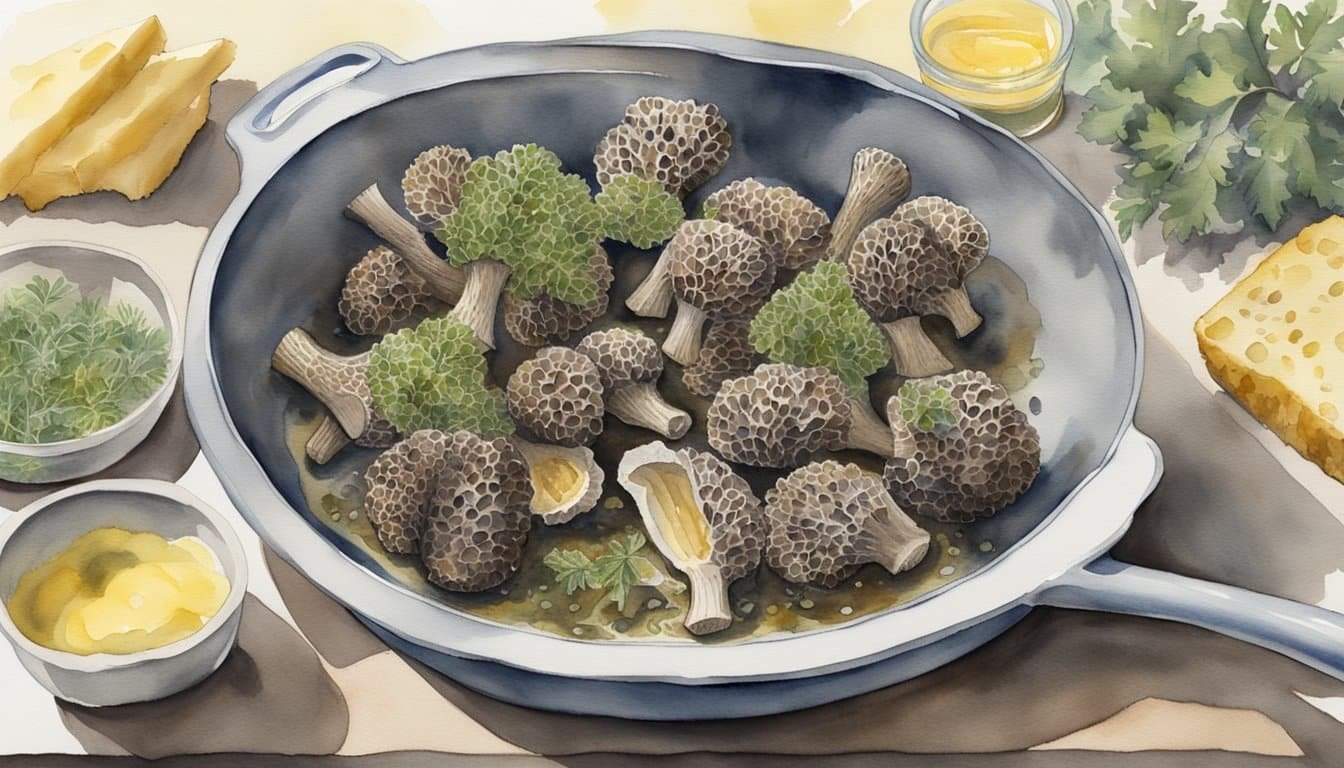Understanding Morel Mushrooms
Morel mushrooms are a springtime favorite for foragers and gourmet chefs alike. These distinctive fungi are known for their honeycomb-like appearance on the cap, which is attached to a hollow stem. Morels are not only sought after for their unique, nutty flavor but also for the thrill of the hunt, since they can be challenging to find.
Morels belong to the genus Morchella, and there’s an important distinction between true morels and false morels. True morels are considered safe to eat once cooked, while their counterparts, false morels, contain potentially harmful compounds.
When it comes to reproduction, morels use spores that are released from the pits of their caps into the air. However, creating morel mushrooms at home can be tricky, as their mycelium, or the vegetative part of the fungus, requires specific conditions to thrive. This process is nature’s way of ensuring the spread and growth of morel mushrooms in their natural habitat.
Here are some fascinating titbits about these mysterious mushrooms:
- Morels are a sign of a healthy ecosystem, often springing up in burned or recently disrupted forests.
- These mushrooms form symbiotic relationships with trees, making them a vital part of the forest’s network.
- Cooking morels is crucial, as it removes any toxins and brings out their delicious flavor.
To dive further into the role of morels in different forest conditions, check out the study on morel productivity in various forests. For an exploration of the cultural impact of these fungi and how that shapes our understanding, Morel Tales: The Culture of Mushrooming offers an in-depth look. And for an important distinction between morel varieties and their safety in consumption, the article on false or true morels provides essential information.
Foraging and Identifying Morels

When it comes to foraging for morels, knowing where to look and how to accurately identify these prized wild mushrooms is crucial. Seasoned foragers revel in the hunt for these elusive fungi each spring, turning over each leaf and twig with anticipation.
Habitats and Conditions
Morels enjoy a symbiotic relationship with trees, particularly ash, oak, and elm. Come spring, when the soil warms and the right mix of moisture is in the air, they begin to fruit, often found in wooded areas across North America and Europe. For example, states like Kentucky, Michigan, and Virginia boast bountiful morel harvests. They can be discovered in both deciduous and coniferous forests, and a keen eye might spot them around areas disturbed by fire or other environmental changes. While morels often favor proximity to water, it’s the balance of conditions that nurtures their growth.
Species and Safety
With three main types: black morels, yellow morels, and late morels, identifying Morchella species, such as Morchella esculenta and Morchella elata, requires attention to detail. For the uninitiated, distinguishing between edible morels and harmful look-alikes like the poisonous gyromitra can be daunting. These look-alikes can sometimes cause severe toxicity if ingested. Therefore, accurate identification is essential for safe foraging, as is knowledge of the false morels that you might encounter while searching for the real thing. A helpful resource that guides foragers through identification techniques offers insights into safely harvesting these fungi.
The excitement of morel foraging not only lies in the reward of finding these delicious wild mushrooms but also in the adventure of exploring the rejuvenating springtime woods. With each successful foraging trip, enthusiasts are reminded that morels are not just a culinary delight but also a sign of nature’s perennial renewal.
Preparing and Cooking Morels

Morel mushrooms are a gourmet delight, known for their earthy flavor and honeycomb appearance. Proper preparation and cooking are essential to enhance their unique meaty texture and reduce any potential risks.
Cleaning and Storing
Cleaning morels begins with a gentle yet thorough soak in water to remove any dirt hidden in their distinctive crevices. They should then be rinsed and patted dry, as morels are like sponges and can become waterlogged. Fresh morels can be stored in the refrigerator in a paper bag for a few days. Dried morels, on the other hand, require reconstitution in water, a process that rehydrates them, bringing them back to a closer state to fresh. It is crucial to store dried morels in a cool, dry place to maintain their flavor profile.
Cooking Techniques and Pairings
Morels are versatile and can be cooked using several techniques. Sautéing them in butter or oil with a pinch of salt is a popular method that brings out their rich flavor. They can be added to risottos, soups, and paired with ramps, asparagus, or shallots. Chefs recommend that morels should not be eaten raw due to their tough texture and potential toxicity. Grilled morels make an excellent side dish, and they can also enhance the taste of poultry or meat dishes. Gourmet recipes often leverage the unique taste of morels, treating them as the centerpiece in sophisticated dishes.

